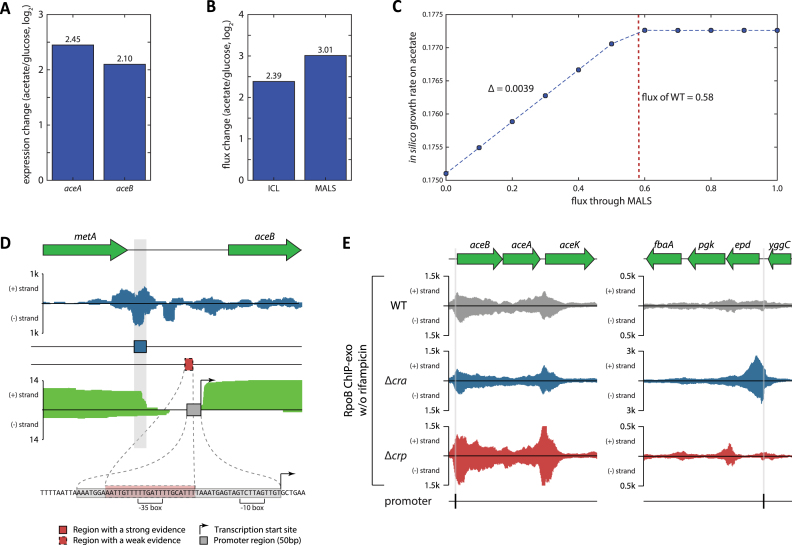Figure 5.
Regulatory activity of Cra on the glyoxylate shunt. (A) Expression of genes in the glyoxylate shunt, aceA and aceB, was activated on acetate compared to glucose. (B) Normalized reaction fluxes through the glyoxylate shunt were calculated to increase on acetate compared to glucose, agreeing with expression changes. (C) When the model was used to simulate growth on acetate, in silico growth rate was predicted to decrease as reactions of the glyoxylate shunt were forced to have a lower volume of reaction flux. (D) In-depth mapping of a Cra binding site and the promoter of aceBA explains how the activity of Cra can override the activity of CRP. (E) RpoB ChIP-exo experiments confirm the regulatory mode by Cra and CRP on the aceBA and epd-pgk-fbaA operons. Cra up-regulates expression of aceBA, whereas CRP down-regulates expression of the operon. When cra was removed, the RNA polymerase occupancy decreased over the aceBA operon. When crp was knocked-out, the RNA polymerase occupancy increased over the operon. On the other example of the epd-pgk-fbaA operon, the RNA polymerase occupancy analysis also confirmed the proposed regulatory mode by Cra and CRP.

